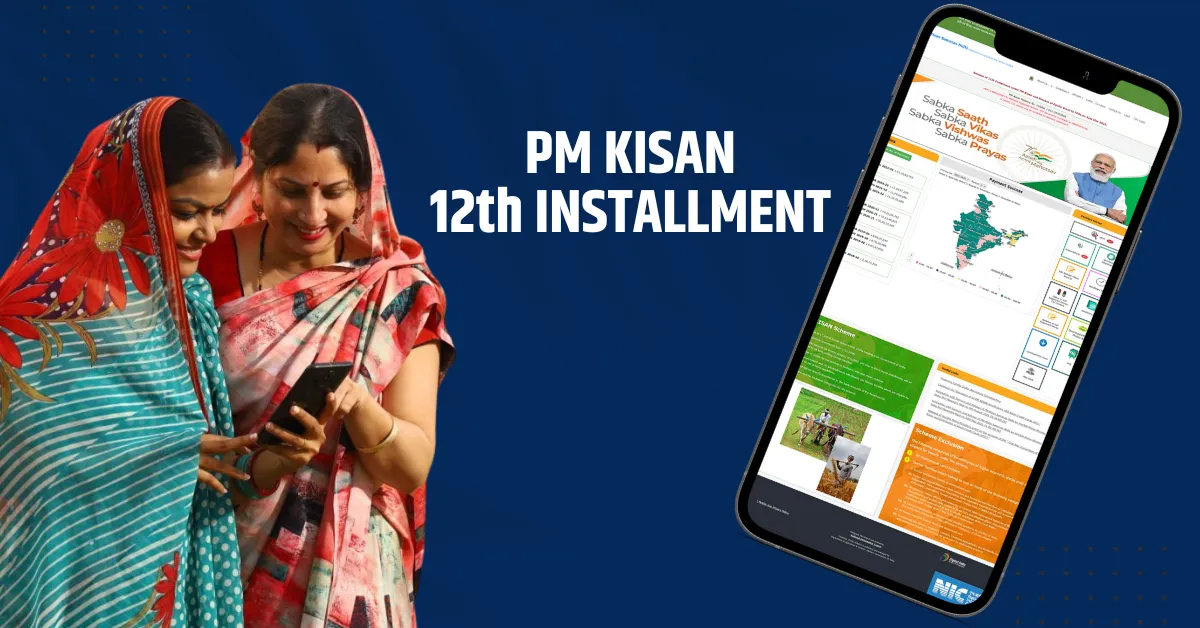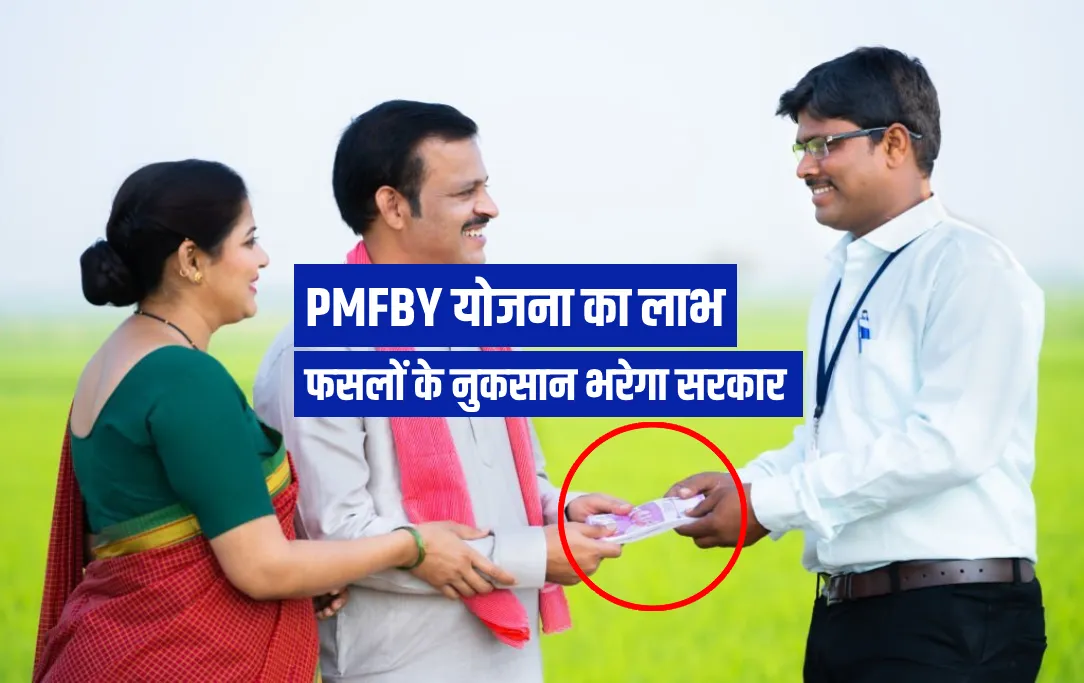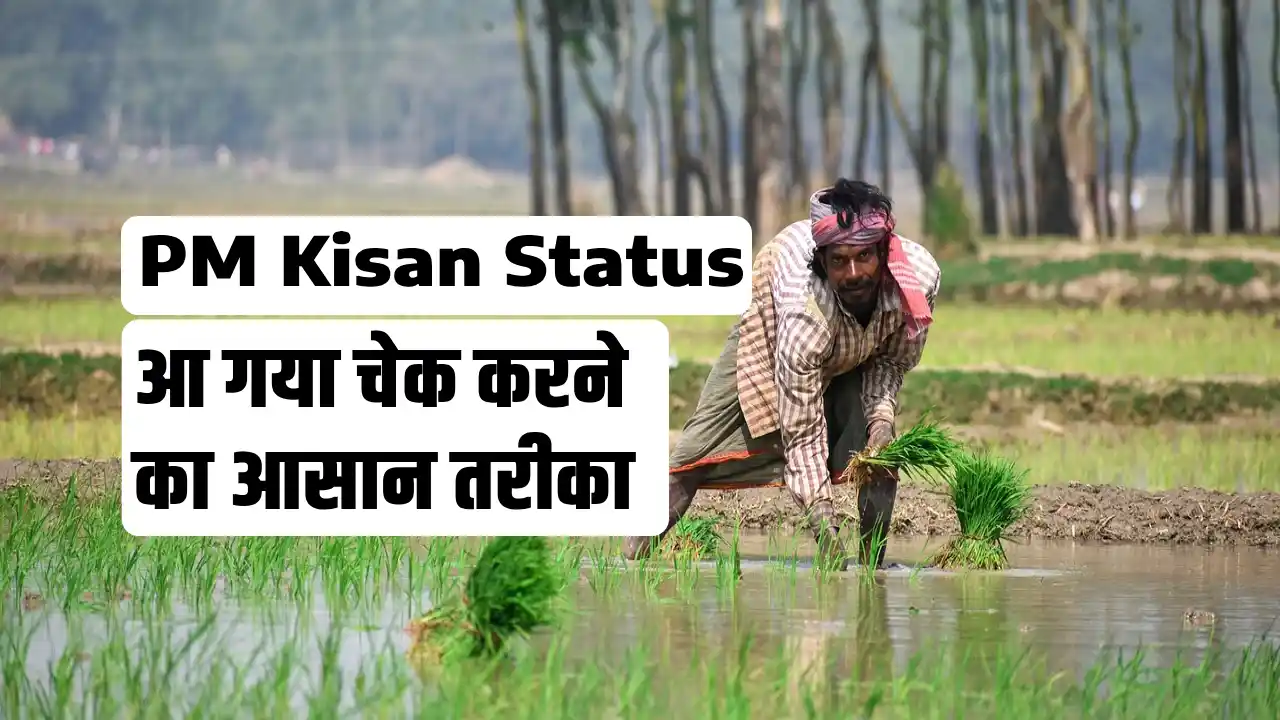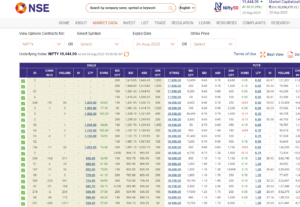Step-4: मोबाइल नंबर डालकर ओटीपी बटन पर क्लिक करने के बाद, आपके सामने और एक बॉक्स ओपन होगा। जहां पर आपके
पीएम किसान रजिस्टर मोबाइल पर एक ओटीपी आएगा।
उस ओटीपी को डालना है, और सबमिट ओटीपी (Submit OTP) बटन पर क्लिक करना है.
Step-5: गेट ओटीपी बटन पर क्लिक करने के बाद अब उसी जगह आपको दोबारा दिखाया जाएगा गेट आधार ओटीपी (Get Aadhar OTP).
उस पर आप को फिर से क्लिक करना है।
Step-6: आपके मोबाइल नंबर पर यूआईडीआई UIDAI की तरफ से एक ओटीपी भेजा जाएगा, उस ओटीपी को डालने के लिए एक नया बॉक्स
ओपन हुआ है उस पर ओटीपी को डालना है। और सबमिट फॉर ऑथेंटिकेशन (Submit For Auth.) बटन पर क्लिक करना है।
अब आपको कुछ देर रुकना है क्योंकि आपका रिक्वेस्ट पीएम किसान पोर्टल के सर्वर तक जाएगा, आपका डॉक्युमेंट्स वेरीफाई होगा और
वहां से रिजल्ट आपके सिस्टम के डिस्प्ले के ऊपर दिखाएगा, इसके लिए कुछ समय लग सकता है।
कुछ देर रुकने के बाद उसी पेज के ऊपर आपको वेरिफिकेशन सक्सेसफुल (Verification Successful) का एक मैसेज दिखाया जाएगा, इससे आपको
पता लग जाएगा कि आपका केवाईसी संपूर्ण हो गया है।
दोस्तों अब हम लोग बात करेंगे किसान सम्मान निधि योजना ऑनलाइन बेनिफिशियरी स्टेटस कैसे चेक करें?
Step-1: पीएम किसान सम्मान निधि योजना ऑनलाइन बेनिफिशियरी स्टेटस चेक करने के लिए आपको पीएम किसान ऑफिशियल वेबसाइट
के होमपेज के ऊपर जाना है। थोड़ा सा नीचे देखेंगे तो फार्मर कॉर्नर (Farmers Corner) नाम का एक सेक्शन दिखाया जाएगा
किसान सम्मान निधि योजना ऑनलाइन Kisan Samman Nidhi Yojana Online
उसके अंदर आपको बेनेफिशरी स्टेटस (Beneficiary Status) नाम का एक ऑप्शन देखने के लिए मिलेगा, उस पर आपको क्लिक करना है।
Step-2: अब आपके सामने एक नया पेज ओपन होगा इस पेज में तीन अलग-अलग बॉक्स दिखाएं जाएगा। सबसे पहले बॉक्स पर दाहिने
छोटा सा एक एरो का निशान दिखाई देगा उस पर क्लिक करके आपको मोबाइल नंबर सिलेक्ट करना है।
किसान सम्मान निधि योजना ऑनलाइन Kisan Samman Nidhi Yojana Online
दूसरे बॉक्स पर आपको पीएम किसान पोर्टल पर रजिस्टर्ड मोबाइल नंबर डालना है। तीसरी बॉक्स पर नीचे दिए गए फोटो से जो
कोड है उस कोड को देखकर टाइप करना है। और आखिर में गेट डाटा (Get Data) बटन पर क्लिक करना है।
Step-3: आपके सामने आपका पीएम किसान बेनिफिशियरी स्टेटस दिखाई देगा। आप चाहें तो इसे डाउनलोड कर सकते हैं।
किसान सम्मान निधि योजना ऑनलाइन Kisan Samman Nidhi Yojana Online
बेनिफिशियरी स्टेटस मैं आपका नाम आपका पिता का नाम आपका वेरिफिकेशन मोड आपको कितना किस्त का पैसा मिला
है कब कब पैसा मिला है इन सभी दिखाई देगा।
अब हम लोग बात करेंगे पीएम किसान सम्मान निधि योजना ऑनलाइन बेनिफिशियरी लिस्ट कैसे देखें (pm Kisan Samman
Nidhi Yojana online beneficiary list Kaise Dekhen) उसके बारे में।
Step 1: किसान सम्मान निधि योजना ऑनलाइन लिस्ट देखने के लिए आपको पीएम किसान ऑफिशियल वेबसाइट के होमपेज के
ऊपर जाना है। थोड़ा सा नीचे देखेंगे तो फार्मर कॉर्नर (Farmers Corner) नाम का एक सेक्शन मिलेगा। जिसके अंदर आपको
बेनिफिशियरी लिस्ट (Beneficiary List) नाम से एक ऑप्शन दिखाई देगा। उसके अंदर आपको क्लिक करना है।
किसान सम्मान निधि योजना ऑनलाइन Kisan Samman Nidhi Yojana Online
Step-2: आपके सामने जो नया पेज ओपन होगा उसके अंदर आपको अलग-अलग 5 बॉक्स दिखाई देगा।
- पहले बॉक्स में से आपको आपके राज्य सिलेक्ट करना है।
- दूसरे बॉक्स मे से आपको आपके जिला सिलेक्ट करना है।
- तीसरी बॉक्स के अंदर आपको आपके उप जिला सिलेक्ट करना है।
- चौथे बॉक्स से आप अपना ब्लॉक चुनें।
- पांचवें बॉक्स में से अपना गांव चुनें।
- उसके बाद गेट रिपोर्ट बटन पर क्लिक करें।
- किसान सम्मान निधि योजना ऑनलाइन Kisan Samman Nidhi Yojana Online
जैसे कि मैंने अभी अभी आप लोगों को बताया हूं उसी तरीके से मैंने भी सारे बॉक्स को भर के गेट रिपोर्ट बटन पर क्लिक किया, तो ऊपर दिए
गए तस्वीर की तरह मेरे सामने किसान सम्मान निधि योजना ऑनलाइन बेनिफिशियरी लिस्ट निकलकर आया। ऐसा आपके सामने भी लिस्ट दिखाया जाएगा।
तो इस वजह से आप लोग पीएम किसान सम्मान निधि योजना ऑनलाइन बेनिफिशियरी लिस्ट को चेक कर सकते हो।
जैसे कि मैंने बताया हूं आज आप लोगों को किसान सम्मान निधि योजना ऑनलाइन जितने भी काम किया जा सकता है उन सभी काम को करना
सिखाऊंगा। तो अब हम लोग बात करेंगे पीएम किसान सम्मान निधि नया रजिस्ट्रेशन कैसे करें pm kisan new farmer registration kaise kare
उसके बारे में। अगर आप लोग अभी भी रजिस्ट्रेशन नहीं किए हो तो इस जगह को ध्यान से पढ़िए।
Step-1: पीएम किसान सम्मान निधि नया रजिस्ट्रेशन करने के लिए आपको पीएम किसान ऑफिशियल वेबसाइट के की होम पेज के
ऊपर जाना है। थोड़ा सा नीचे देखेंगे तो आपको फार्मर कॉर्नर (farmers Corners) नाम का एक ऑप्शन दिखाई देगा। उसके अंदर
न्यू फार्मर रजिस्ट्रेशन (New Farmers Registration) नाम का एक ऑप्शन मिलेगा। उस पर क्लिक करना है।
किसान सम्मान निधि योजना ऑनलाइन Kisan Samman Nidhi Yojana Online
Step-2: नीचे दिए गए तस्वीर की तरह आपके सामने एक नए पेज ओपन होगा। जहां पर काफी सारे बॉक्स से और उन बॉक्स में
आपको सही-सही जानकारी भरना होगा।
किसान सम्मान निधि योजना ऑनलाइन Kisan Samman Nidhi Yojana Online
Step-3: सबसे पहले आपको आपकी एरिया सिलेक्ट करना है अर्थात क्या आप ग्रामीण क्षेत्र में रहते हो तो आपको रूरल फार्मर
रजिस्ट्रेशन (Rurel Farmer Registration) पर टिक रहने देना है, अगर आप शहर क्षेत्र में पढ़ते हो तो आपको अर्बन फार्मर
रजिस्ट्रेशन (Urban Farmer Registration) पर पिक लगाना है।
उसके बाद जो पहला बॉक्स दिखाई दे रही है उसमें किसानों के आधार नंबर डालना है, उसके नीचे आधार के साथ लिंक किया
हुआ मोबाइल नंबर डालना है, उसके नीचे दिए गए बॉक्स पर किसानों के राज्य सिलेक्ट करना है, उसके नीचे दिए गए बॉक्स में
इमेज कोड डालकर गेट ओटीपी (Get OTP) बटन पर क्लिक करना है।
Step-4: उसी जगह एक नया बॉक्स बन जाएगा इस बॉक्स में आपके मोबाइल नंबर पर भेजा गया ओटीपी को डालना है, फिर
से आपको इमेज कोड डालकर, सबमिट बटन (Submit Button) पर क्लिक करना है।
किसान सम्मान निधि योजना ऑनलाइन Kisan Samman Nidhi Yojana Online
Step-4: इसी पेज के निचले हिस्से में और एक बॉक्स बन जाएगा, इस बॉक्स में आपके मोबाईल पर आधार के तरफ
से एक ओटीपी भेजा गया है, उस ओटीपी को डालकर वेरीफाई आधार ओटीपी (Verify Aadhar OTP) पर क्लिक
करना है।
किसान सम्मान निधि योजना ऑनलाइन Kisan Samman Nidhi Yojana Online
Step-5: अब आपके सामने एक बहुत बड़ा फॉर्म आएगा इस फॉर्म में कुछ तथ्य आधार से खुद-ब-खुद जुड़ गया है
और कुछ आपको यहां पर जोड़ना होगा।
किसान सम्मान निधि योजना ऑनलाइन Kisan Samman Nidhi Yojana Online
सबसे पहले आप देखेंगे कि आपका राज्य दिख रहा है उसके दाहिने और बॉक्स में आपको आपका जिला, आपका तहसील, आपका ब्लॉक, और
आपका गांव, सिलेक्ट करना है।
पर्सनल डीटेल्स ऑप्शन के अंदर भी काफी सारे ऑप्शन जो है पहले से भरा हुआ है। आपको सिर्फ कैटेगरी अर्थात जाति सिलेक्ट करना है, फार्मर
टाइप में आप स्मॉल या अदर्स करें, उसके बाद लैंड रजिस्ट्रेशन आईडी डालें, उसके बाद रेशन कार्ड नंबर भरे, उसके बाद क्या आप पहले से पीएम
किसान मंधन योजना का लाभ उठा रहे हो उस बॉक्स में आप यस और नो पर क्लिक करें।
पीएम किसान ऑफिशल पोर्टल अपडेट के बाद इसी फॉर्म के अंदर आप अपना बैंक का आईएफएससी कोड डालेंगे तो बैंक नेम दिखाई
देगा, उसके दाहिने और बॉक्स में बैंक अकाउंट नंबर सही सही भरना है। और आपको थोड़ा नीचे की ओर जाना है।
किसान सम्मान निधि योजना ऑनलाइन Kisan Samman Nidhi Yojana Online
अब आपको जमीन की मालिकाना सिलेक्ट करना है। जैसे कि, जमीन आवेदन कारी किसान के नाम पर है तो उसे सिंगल सिलेक्ट करना है।
अगर उनके साथ उस जमीन का कोई दूसरा मालिक भी है तो उसे जॉइंट सिलेक्ट करना है। उसके बाद Add बटन पर क्लिक करना है।
ऐड बटन पर क्लिक करने के बाद आपको जमीन से जुड़ी कुछ जानकारी भरना होगा।
किसान सम्मान निधि योजना ऑनलाइन Kisan Samman Nidhi Yojana Online
सबसे पहली बॉक्स में आपको आपकी खाता नंबर डालना है, उसके दाहिने ओर दिए गए बॉक्स में आपको जमीन की दाग नंबर डालना है,
उसके दाहिने और दिए गए बॉक्स पर आपको जमीन की मात्रा हेक्टर में डालना है,
उसके नीचे दिए गए सेक्शन में से जमीन आपके नाम किस तरीके से आया है वह सिलेक्ट करना होगा। सबसे पहले 01-01-2019 तारीख
यहां पर दिखाया गया है। उससे पहले से आप के नाम पर जमीन है तो आप Before बटन पर टिक रक्खे। उस तारीख के बाद से अगर
आप के नाम पर जमीन है तो आप After बटन पर क्लिक करें।
जमीन किस तरीके से आपके नाम पर हुआ है उसको आपको लैंड ट्रांसफर डिटेल बॉक्स में सिलेक्ट करना है। नीचे दिए गए तस्वीर
में आप देख सकते हो यहां पर 5 ऑप्शन दिया गया है।
किसान सम्मान निधि योजना ऑनलाइन Kisan Samman Nidhi Yojana Online
इन पांचों ऑप्शन में से आपको आपके जमीन से जुड़ी ऑप्शन सिलेक्ट करना है। उसके दाहिने ओर दिए गए बॉक्स में कब से
आप के नाम पर जमीन है वह डेट सिलेक्ट करना है।
अब आप को आप की जमीन की ताजा स्कोर कैन करके अपलोड करना होगा आधार कार्ड को स्कैन करके अपलोड करना
होगा बैंक पासबुक को स्कैन करके अपलोड करके सेव बटन पर क्लिक करना होगा। सभी डॉक्यूमेंट स्कैन करने के बाद उसे
पीडीएफ फॉर्मेट में अपलोड करें।
किसान सम्मान निधि योजना ऑनलाइन Kisan Samman Nidhi Yojana Online
और जैसे थे बटन पर क्लिक करेंगे तो आपका एप्लीकेशन संपूर्ण हो जाएगा। आपको अगले पेज में एक मैसेज दिखाएगा जहां पर यह
बताया रहा है रिकॉर्ड सफलतापूर्वक सबमिट कर दिया गया है (Record has been submitted successfully) और साथ में आपको
आपका फार्मर आईडी भी दिया जाएगा।
कुछ दिन बाद आप फिर से पीएम किसान ऑफिशियल वेबसाइट के अंदर आकर आपकी एप्लीकेशन स्टेटस को चेक कर
सकते हो।
[contact-form][contact-field label=”Name” type=”name” required=”true” /][contact-field label=”Email” type=”email” required=”true” /][contact-field label=”Website” type=”url” /][contact-field label=”Message” type=”textarea” /][/contact-form]






























































